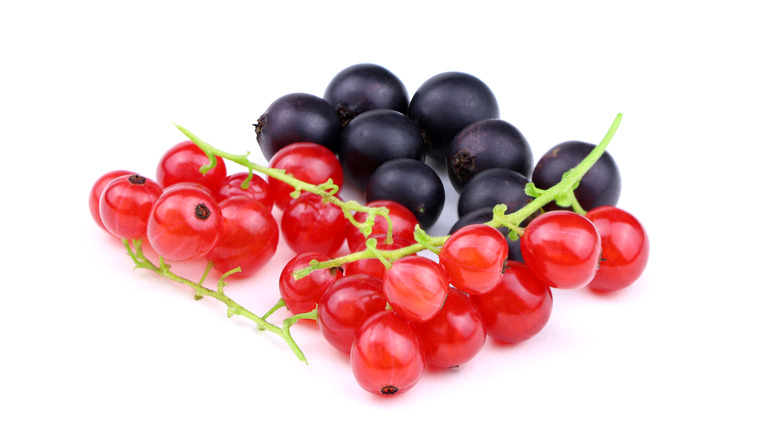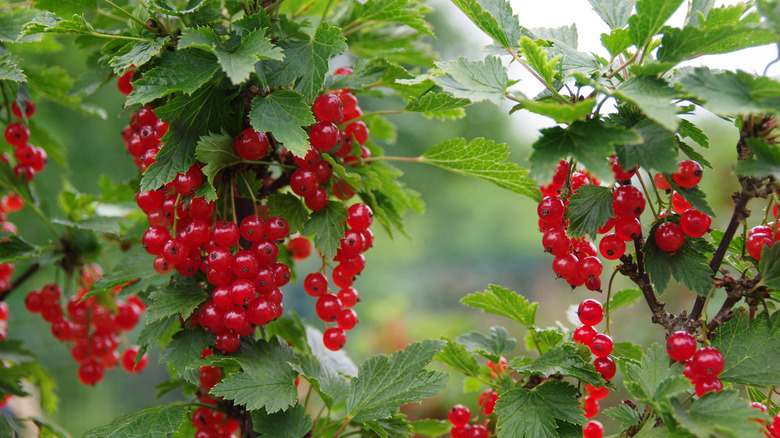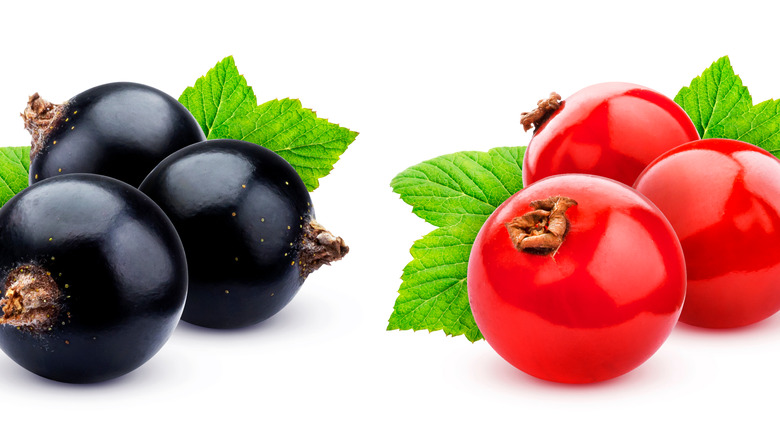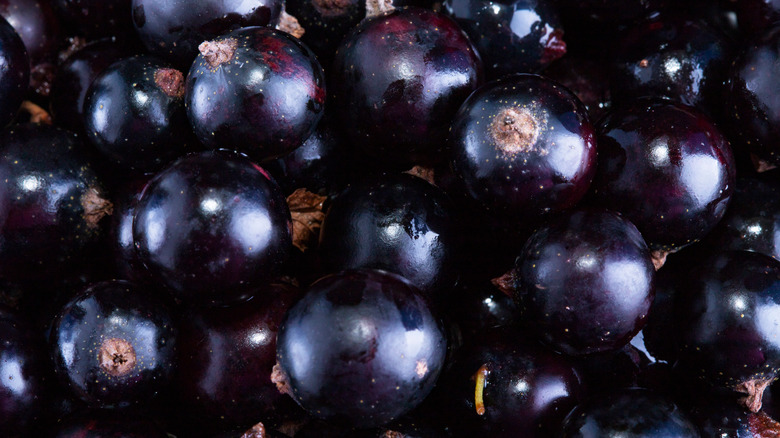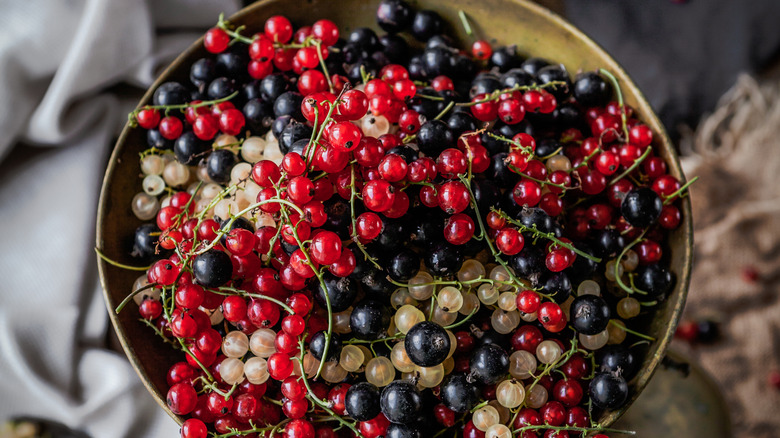The Difference Between Red And Black Currants
Have you ever tried currants before? Fresh currants have plenty of health benefits and are delicious in both sweet and savory dishes. According to FoodPrint, this fruit is not too common in supermarkets – you are probably better off finding them at a farmer's market or a specialty grocery store.
When discussing the differences between various currants, this generally refers to fresh currants, not dried ones. Dried currants are actually small Corinth grapes and can be called Zante currants. According to The Kitchn, fresh currants are the tart fruit that grow on bushes.
For anyone who likes fresh berries and a sour taste, then currants should be on your list of fruits to look out for. Within the gooseberry family, there are multiple kinds of currants, including red, black, pink, and white. Black and red currants are obviously different colors, and while they both have a tart berry taste, each still has its own unique flavor profile.
What are currants?
If you are not familiar with currants, it's likely because they are not incredibly common in grocery stores. At one point, per the Tampa Bay Times, black currants were banned in the United States because they could spread fungus that harmed pine trees. Now, you can find currants in the United States, but this fruit is also grown in throughout Northern Europe according to the University of Minnesota. According to Britannica, currants are part of the Ribes genus and Great Britain grows more black currants than anywhere else.
Currants also have a number of health benefits, like having a good amount of vitamin C, according to Very Well Fit. The website also notes that currants contain calcium and iron, and black and red currants have more antioxidants than lighter currants, like pink and white ones. Currants are also low in fat, but high in natural sugar.
What's the difference between red and black currants?
A major difference between red and black currants is the taste. According to Fine Cooking, black currants are the sweetest type of currant, "red currants are bracingly tart and a bit sweet, like a sugar-kissed cranberry," and white currants fall somewhere in the middle.
Thrive Cuisine described the differences in smell of black currants and dried black currants (true dried currants, not the grapes!). "Black currant actually has a strong grape sort of smell, though crossed with cherry. Fresh black currants also have a sort of acidic quality in the aroma. Dried black currants smell more perfumy with notes of vanilla and wildflower. Their earthiness may also be amplified," the site wrote.
If you're buying currants, Fine Cooking recommends that you look for firm currants that are shiny, translucent, and still attached to the stem. Since currants are tart, you can put some sugar on them if you plan to eat them right off the stem.
Are red and black currants interchangeable?
According to Mary Dirty Face Farm, currants are mostly interchangeable. The farm's website says that you can swap out red, white, and pink currants in a recipe because, even though they have different flavors, they are more similar to one another than black currants. The website describes black currants as having a more "musky or earthy flavor" and red ones are often stronger in tartness.
When using currants, you should think about the dish you're making and what flavors you want to shine. Though you do want to be mindful of whether red or black currants would be tastier in your dish, if you've got a large supply of currants, you can make a delicious jam with either red or black currants. If you choose to eat them fresh, there is really no significant difference between the two, especially if adding to cereal or a lunch salad.
How do you use red and black currants?
Other than jam, there are a wide variety of uses for currants, and they can go in both sweet and savory dishes. Black currants pair easily with game meats, like duck or venison, especially when made into a sauce. Black currants can also be used in sweets like a berry crumble.
Sauces made from red currants can accompany both meat and fish entrées. If you want to add a little tartness to your baked goods, red currants are a great option.
If red currants are unavailable at the local store, growing them at home can be done if you live in a place with the right conditions. Red currants grow in "cool, moist northern climates," according to Britannica, so having a currant bush in your backyard is best if you live in an area that's not too hot or humid.
There aren't many recipes that use both red and black currants in the same dish, but if you want to eat them raw, you can sprinkle them both over a salad or use them as a garnish to add a few pops of color to your plate. If you can't get your hands on any currants, other berries can have the same fresh, juicy flavor and work well in jams and other sweet treats.
